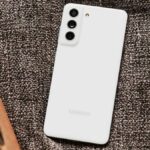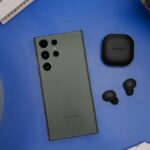
At its 2015 Electronics Investors Forum, Samsung revealed details about its next generation camera technology: BRITCELL. The new camera sensor from Samsung uses a pixel technology that enhances the light sensitivity of the pixels in low light whilst reducing the color artifacts.
BRITCELL camera sensors have a z height of 5.0mm and come with a reduced pixel size of 1.0um. Usually, a reduction in pixel size leads to a huge loss in their sensitivity and increases color artifacts. With smartphones becoming thinner, it has become a necessity for Samsung (and other OEMs) to make its camera module smaller whilst making sure that the pixel sensitivity is not reduced or affected in anyway.

For its BRITCELL image sensor, Samsung has changed the pixel arrangement to improve the light sensitivity. By moving away from the traditional Bayer filter of pixel arrangement, Samsung is able to greatly increase the amount of light being absorbed by the sensor. However, the company will have to improve its post processing to make up for the reduced sensitivity to green light. The company states that these improvements allow BRITCELL sensor with 1.0um pixel size to have the same amount of sensitivity to light as traditional smartphone camera sensors with 1.12um pixels.
The new sensor also makes use of Samsung’s Smart WDR technology that allows it to merge different multiple exposure images into one for better spatial resolution.
Samsung did not confirm whether it plans on using the BRITCELL image sensor on its upcoming 2016 flagship, the Galaxy S7, or not. In my opinion, despite Samsung boasting about the low light pixel sensitivity of its latest sensor, it is unlikely that it will use a BRITCELL sensor on the Galaxy S7. Instead, it will likely go for a new IMX 300 series sensor from Sony, though that might lead to the handset having a camera bump similar to the Galaxy S6.
[Via SamMobile]



















